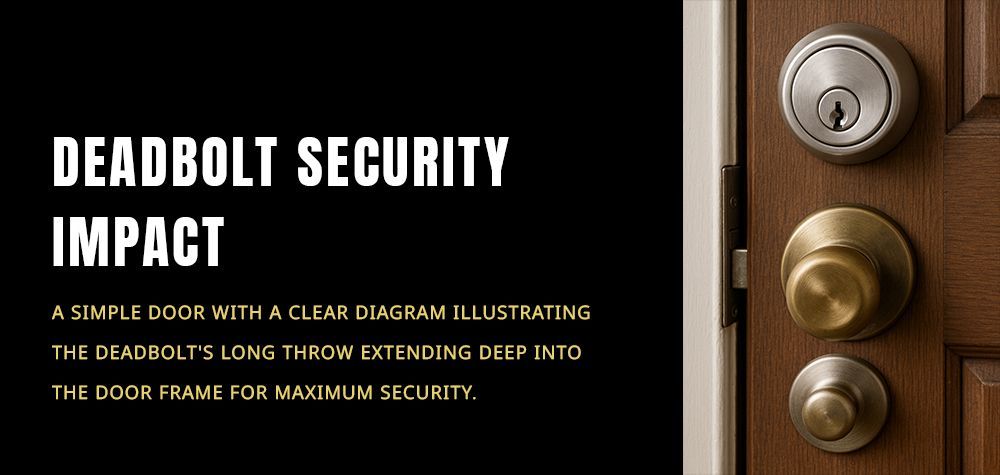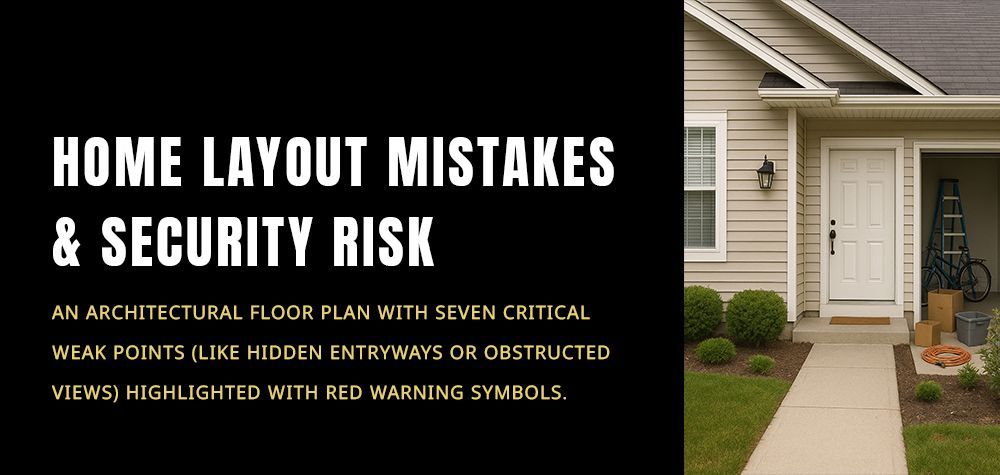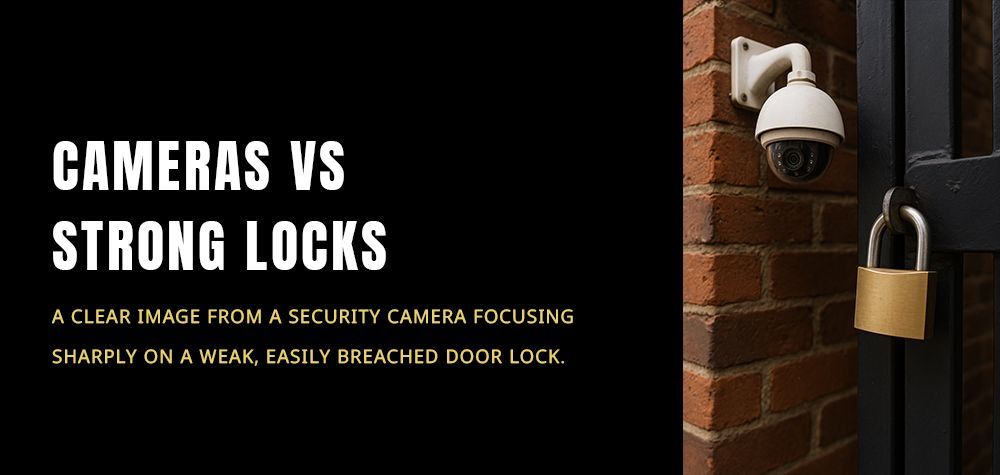Can you install a deadbolt on a metal door?
When it comes to securing your home, installing a deadbolt is one of the best decisions you can make. Deadbolts add an extra layer of protection that regular door locks often lack. However, if your door is made of metal rather than wood, you might be wondering if the installation process is even possible.
The simple answer is yes — you can install a deadbolt on a metal door. But as with many things involving metal, it takes the right approach, the right tools, and a careful hand to get it right.
In this article, we’ll walk through everything you need to know: why installing a deadbolt on a metal door is a good idea, the challenges you might encounter, the step-by-step process to do it properly, the risks involved, expert recommendations, and some important preventive measures to keep everything working smoothly over time.
Emerging Trends in Smart Locks & Digital Security (2024-2025)
Why Install a Deadbolt on a Metal Door?
Metal doors are naturally strong and durable, making them an excellent choice for security. However, even the strongest door is only as good as its lock. Adding a deadbolt significantly improves the door's ability to resist forced entry.
A standard latch lock can often be picked or jimmied open with enough effort. A properly installed deadbolt, especially when paired with a metal door, provides a much tougher barrier. This combination not only deters casual thieves but also makes it far harder for determined intruders to gain access.
If security and peace of mind are your goals, a metal door with a high-quality deadbolt is one of the best defenses you can have.
Challenges of Installing a Deadbolt on a Metal Door
Before diving into the installation process, it’s important to understand the specific challenges that come with working on a metal surface. Knowing these challenges upfront can save you from frustration and mistakes.
Difficulty Drilling Through Metal
Unlike wood, which is relatively soft and easy to work with, metal requires more force and precision. You need powerful tools and specialized drill bits that can penetrate metal without dulling or breaking.
Risk of Damaging the Door
If the drilling is not done carefully, you could end up denting, bending, or even cracking the metal surface. Mistakes are much harder to fix on metal doors than on wooden ones.
Maintaining Alignment
Getting the deadbolt to line up perfectly with the strike plate is critical. With metal doors and frames, you often have less flexibility to adjust later if something is slightly off. Accuracy is everything.
Risk of Rust
Drilling into a metal door exposes bare metal that, if not properly sealed afterward, can develop rust. Over time, this can compromise both the look and strength of the door.
Understanding these challenges helps you approach the job with the patience and preparation it demands.
How to Install a Deadbolt on a Metal Door: Step-by-Step
Installing a deadbolt on a metal door is not impossible — it just requires careful, steady work. Here's a detailed, step-by-step guide to get it done properly.
Step 1: Gather the Right Tools and Materials
Before you begin, make sure you have a heavy-duty power drill, cobalt or titanium drill bits (specifically for metal surfaces), a hole saw kit for metal doors, a tape measure, masking tape, a level, a pencil or marker, and the deadbolt kit itself.
Trying to improvise with the wrong tools can cause more harm than good, so it’s important to start with the right equipment.
Step 2: Mark Your Drill Points
Measure and mark where you want the deadbolt installed. Typically, the deadbolt should sit about six to twelve inches above the existing handle or lockset. Use a pencil or marker to make precise marks on the door, and apply masking tape over the area to help keep the drill bit steady and prevent scratching.
Double-check your measurements. A few extra seconds spent here can save you a lot of headaches later.
Step 3: Drill the Face Hole
Using your hole saw attachment, slowly drill through the marked spot on the door face to create the main hole for the deadbolt cylinder. Start at a low speed to keep control and gradually increase as the drill begins to cut through the metal.
Patience is crucial. Forcing the drill too quickly can damage the door or burn out your drill bits.
Step 4: Drill the Edge Hole
Next, drill a smaller hole into the edge of the door where the deadbolt latch will be installed. Use a standard drill bit suitable for metal and make sure this hole lines up with the face hole you just created.
Take your time to ensure both holes connect cleanly and align correctly.
Step 5: Install the Deadbolt Mechanism
Fit the deadbolt latch into the edge hole and screw it into place. Then install the outside and inside cylinders of the deadbolt into the face hole, securing them together with the provided screws.
Follow the manufacturer’s instructions carefully to avoid mistakes.
Step 6: Install the Strike Plate
Now that the deadbolt is mounted, it’s time to install the strike plate on the door frame. Close the door and turn the deadbolt to see where it contacts the frame. Mark that point, then drill holes for the strike plate screws.
Make sure the strike plate is firmly attached and properly aligned to ensure smooth locking and unlocking.
Risks Involved in DIY Installation
While installing a deadbolt on a metal door is possible for a careful DIYer, it’s important to recognize the risks involved.
If the lock is improperly aligned, the deadbolt might not fully extend into the strike plate, reducing its effectiveness. A poorly installed deadbolt can be more vulnerable to forced entry — defeating the very purpose of installing it in the first place.
Damage to the door during drilling is another major risk. If you scratch, dent, or warp the metal, you may need costly repairs or even a door replacement.
Finally, if the bare metal around the drilled holes is not properly treated, rust can set in. Over time, rust weakens the door and creates unsightly stains that are difficult to remove.
Expert Recommendations for a Successful Installation
Professionals agree that preparation is the key to success when installing a deadbolt on a metal door.
First, use the correct tools. Cheap drill bits or underpowered drills simply won’t cut it — literally. Investing in good tools will make the process smoother and safer.
Second, go slow. Rushing the drilling process almost guarantees mistakes. Let the drill do the work, applying steady, gentle pressure rather than trying to force it through.
Third, seal the exposed metal. Once the drilling is complete, use a rust-preventative primer or paint to coat the inside edges of the holes. This small step can greatly extend the life of your door.
And finally, don’t hesitate to call a professional locksmith if you feel unsure. Sometimes spending a little extra upfront saves you a lot of stress and expense in the long run.
Preventive Measures to Keep Your Deadbolt and Metal Door in Top Shape
After installation, regular maintenance can help keep your deadbolt and metal door in excellent condition.
Periodically inspect the deadbolt for signs of loosening or misalignment. Tighten screws as needed and ensure that the bolt extends and retracts smoothly.
Check the door for signs of rust around the lock area. If you notice any, treat it immediately with a rust converter or touch-up paint.
Finally, lubricate the deadbolt mechanism once or twice a year using a lock-specific lubricant to keep it operating smoothly.
Preventive care is much easier than repairs down the road.
Conclusion: Strength and Security You Can Count On
Installing a deadbolt on a metal door is absolutely possible — and it's one of the best ways to boost your home's security. While the process comes with some unique challenges, careful preparation, the right tools, and a steady hand make it entirely achievable.
Understanding the potential risks, following a clear step-by-step method, and taking preventive measures afterward ensure that your metal door and deadbolt will protect your home for years to come.
When done right, a metal door with a properly installed deadbolt isn't just strong — it’s practically fortress-level secure.
If you’re feeling unsure about any part of the process, remember: professional locksmiths are always just a call away, ready to help you achieve the peace of mind you deserve.
Call Us Any Time!






